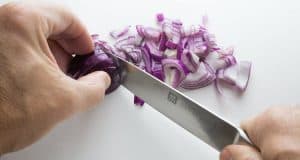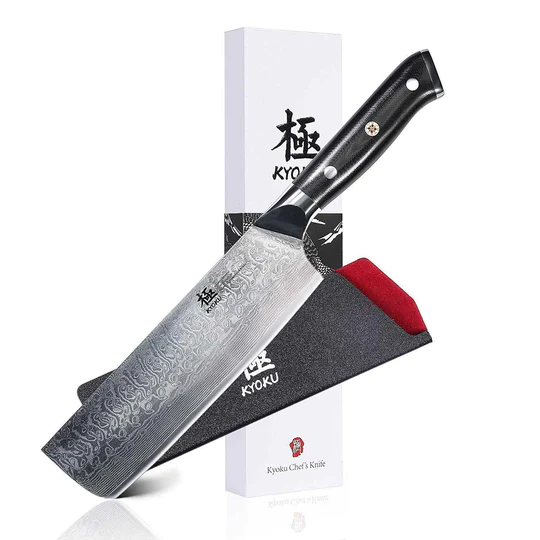


A drywall knife is a must-have when you’re tackling home improvement or construction projects involving drywall. It lets you apply, spread, and smooth joint compound, giving your walls a clean, finished look. Whether you’re patching holes or taping new seams, the right knife just makes everything go smoother and faster.
You’ll find several types of drywall knives out there: taping knives, joint knives, putty knives. Each one suits a different part of the job. The main things to consider? Blade width, flexibility, handle design, and what the knife’s made of. A comfy grip matters, especially for bigger jobs, and stainless steel blades usually last longer and don’t rust as easily.
When picking a drywall knife, think about blade size for your task, how the handle feels, and material quality. The right choice helps you work more efficiently and get cleaner results. We tried out several popular drywall knives to see which ones really deliver for home improvement or construction.
The right tool can save you time and keep the mess down.
| Feature | Why It Matters | What to Look For |
|---|---|---|
| Blade Material | Durability, rust resistance | Stainless or high-carbon steel |
| Blade Width | Coverage, detail work | 4″-12″ as needed |
| Handle | Comfort and control | Rubber or ergonomic handle |
| Ease of Cleaning | Maintenance, speed | Smooth, simple design |
The right drywall knife or tool can make your work way easier. Think about your actual project. For small patches, a 6-inch knife might do the trick. Bigger projects? You’ll probably want a couple of sizes handy. If you can, try out the handle. An uncomfortable grip can really wear you out on longer jobs.
Here are some top picks that help you get clean cuts and sharp finishes, whether you’re fixing up at home or on a job site.

If you want a straightforward drywall knife with a comfortable wood handle and a solid stainless steel blade, this one works well for most home or light construction jobs.
Pros
Cons
This knife is simple to use and offers a comfortable grip thanks to the long hardwood handle. Its balanced weight and lack of clunky rivets make it easy to guide across drywall. The stainless steel blade keeps its shape and doesn’t flex much. Its even great for mudding.
Sometimes, the blade shows a nick or scratch if the packaging is thin, so it’s worth checking before you start. Still, the blade is tough enough for home repair and general taping. You won’t get a fancy, polished look, but it still leaves seams smooth.
If you like a wood handle over plastic and want a blade that won’t rust easily, the Bon Tool Stainless Steel Taping Knife is a steady, no-fuss choice.

This knife’s a practical choice if you want something dependable and lightweight for drywall taping.
Pros
Cons
Pick up the Warner 10″ Drywall Taping Knife and you’ll notice how light it is. The hollow plastic handle and aluminum backing keep the weight down, so your wrist doesn’t get tired, even on bigger projects. The knife glides smoothly across the wall and is easy to clean up after.
The stainless steel blade flares out at the edges, making corners and feathering compound easier. That’s a real plus for taping seams or covering screw holes. The blade holds up, but you might see some flex if you press too hard or tackle rough patches.
The handle is molded tightly to the blade, so it doesn’t loosen up after a few uses. If you’re working in heat or humidity, the grip can get slick if your hands are damp. Still, for most home improvement or lighter construction work, this knife helps you get clean, straight lines without much hassle.

A good pick if you want a lightweight knife that makes taping large drywall seams go faster.
Pros
Cons
When you’re working on drywall, the weight of your knife really matters as you start covering wider seams. The Warner 12″ Drywall Taping Knife stands out for how light it feels, so long passes don’t wear you out. You can move across the wall quickly without that heavy-tool fatigue.
The plastic handle feels secure and stays put, even as you press mud into seams. It’s not padded or rubbery, so after a while your palm might wish for something softer.
The blade’s flared edges help you reach into corners and along inside joints so no more missed spots or lumpy seams. If you’re working with especially thick mud, though, you might notice some flex. Occasionally, the blade arrives with a slight bend, but most work fine right out of the box.
For light to medium work, this Warner knife gets things done efficiently. If you need heavy-duty performance or really care about grip comfort, you might want to look elsewhere.

If you want a solid, reliable drywall knife that feels tough in your hand and handles most tasks, this one’s a good bet.
Pros
Cons
Pick up the Hyde 4-Inch Flex Hammer Head Knife and you’ll notice how solid it feels. The handle fits nicely, and the hammer end is actually handy for quick nail taps while prepping the wall.
The blade stays mostly stiff, with just a hint of flex, but it glides across joint compound easily. Scraping and applying mud goes smoothly, and feathering edges isn’t a struggle. It cleans up quickly, though you’ll want to wipe it dry to avoid rust.
If you want a tool that can handle home improvement projects and still be ready for the next one, this knife does the trick. Just keep it dry and it’ll keep working for you.

If you’re after a balanced drywall taping knife that actually feels good in your hand and gives steady results, this one’s worth a look.
Pros
Cons
The handle sits steady, and the contoured grip doesn’t slip, even when your hands get dusty. Working overhead or along ceilings feels less exhausting since the light design makes longer sessions easier to handle.
Corner work goes pretty smoothly with the tapered blade. It flexes where you need it, so finishing inside or outside seams doesn’t turn into a battle. Spreading joint compound? The blue steel blade helps you get an even layer without much fuss.
The 10-inch width fits tight spots better than wider knives, but if you’re skimming big walls, you might want a larger one. If your hands are on the big side, the handle could feel a bit snug. For corners, repairs, or short drywall runs, the Ames Strong Handle Blue Steel Taping Knife gets the job done without drama.
The Ames Blue Steel Drywall Knife Set covers most drywall finishing or repair jobs. You get 8, 10, and 12-inch knives, so you’re ready for anything from patching to long seams. The blue steel blades feel flexible and smooth, especially when feathering out compound.
The textured, contoured handles help with control and don’t slip, even when your hands get sweaty. After a few hours, the lighter weight really makes a difference compared to heavier models I’ve tried.
The bright yellow handle stands out in a crowded toolbox. Tapered edges help with corners and awkward angles, so finishing looks cleaner. For versatility and durability, the Ames Blue Steel Drywall Knife Set is a pretty safe bet.

If you want a set of drywall knives that actually helps you finish projects efficiently, this one’s a strong contender.
Pros
Cons
When you’re choosing a drywall knife, check out blade quality, handle comfort, reliability, and safety features. Some knives just suit pros better, while others are budget-friendly and work fine at home.
Check this video out for tips on how to tape and mud drywall:
When you the perfect drywall knife you need to know how to properly care for it. To clean your drywall knife, use warm water and mild soap to wipe away any leftover drywall or construction debris.
Be sure to do so using cut proof gloves to prevent injury. Also, make sure you dry your blade immediately. Drywall knives are made out of stainless steel which makes them subject to rust if they aren’t dried properly.
Like any blade, drywall knives should be stowed away properly to avoid accidents or injury. This will also ensure your blade stays in tip-top shape for dependable, long term use. Make sure you pick out a high-quality to ensure your knife is adequately protected when not in use.


Knife Buzz offers independent product reviews on a wide range of knives used in the kitchen, home, and outdoors. We make it easy for you to find the right knife at the best price.

Knife Buzz offers independent product reviews on a wide range of knives used in the kitchen, home, outdoors and at work.
The Knife Buzz Team are passionate about reviewing knives and we cater to a targeted audience that needs independent advice before purchasing.
KnifeBuzz.com may earn affiliate commissions on some pages of this website. Knife Buzz is a participant in the Amazon Services LLC Associates Program, an affiliate advertising program designed to provide a means for sites to earn advertising fees by advertising and linking to Amazon.com. Amazon and the Amazon logo are trademarks of Amazon.com, Inc, or its affiliates. When you click links to various merchants on this site and make a purchase, this can result in this site earning a commission. Other affiliate programs and affiliations include, but are not limited to, Google AdSense.